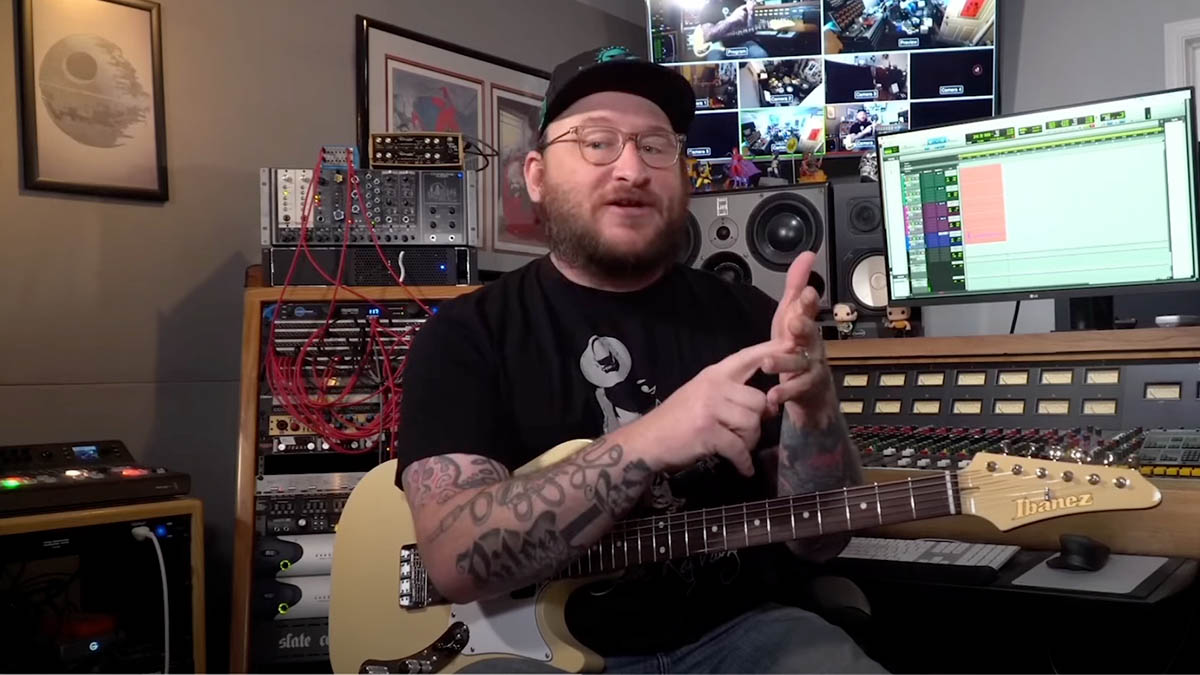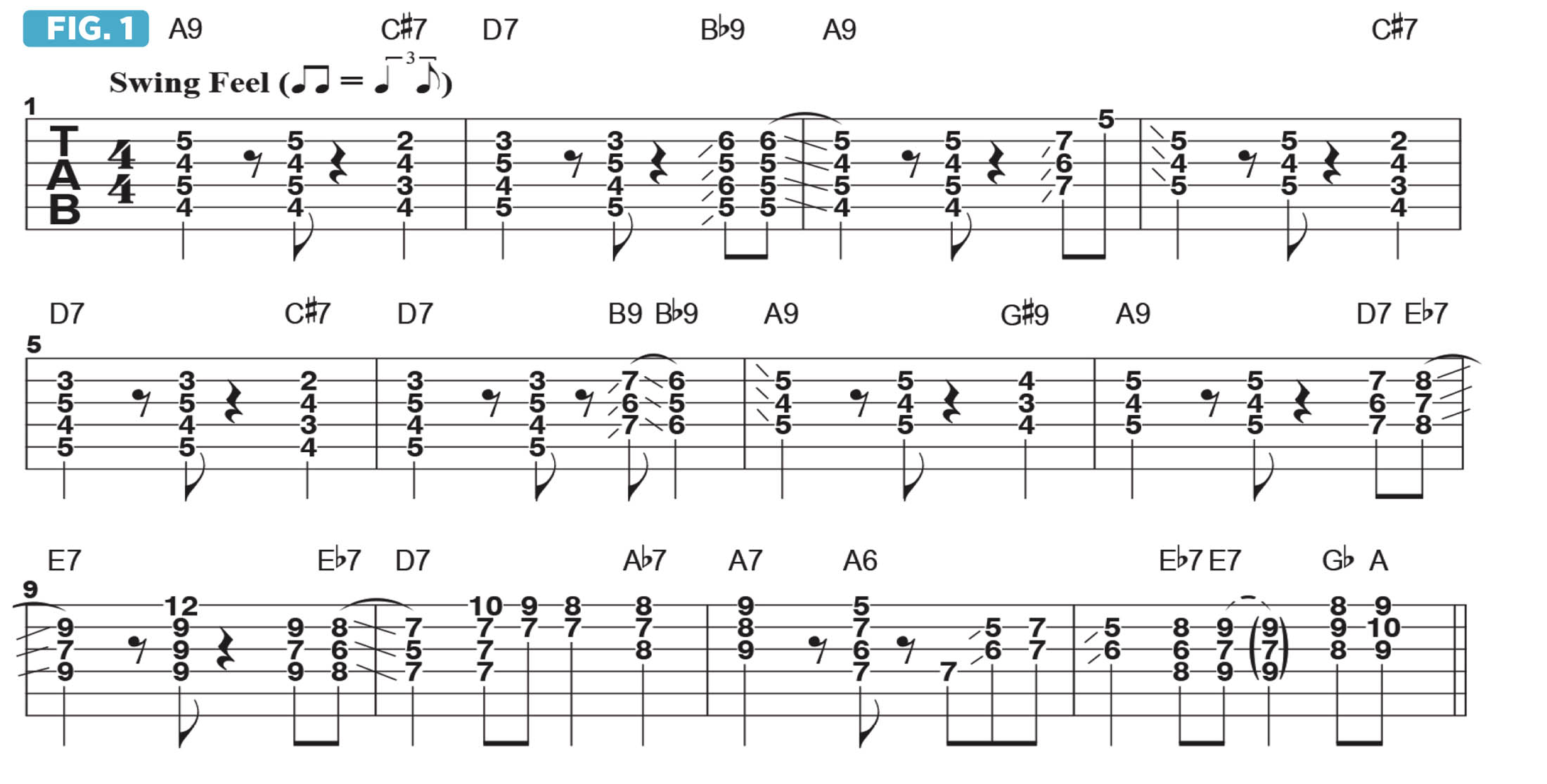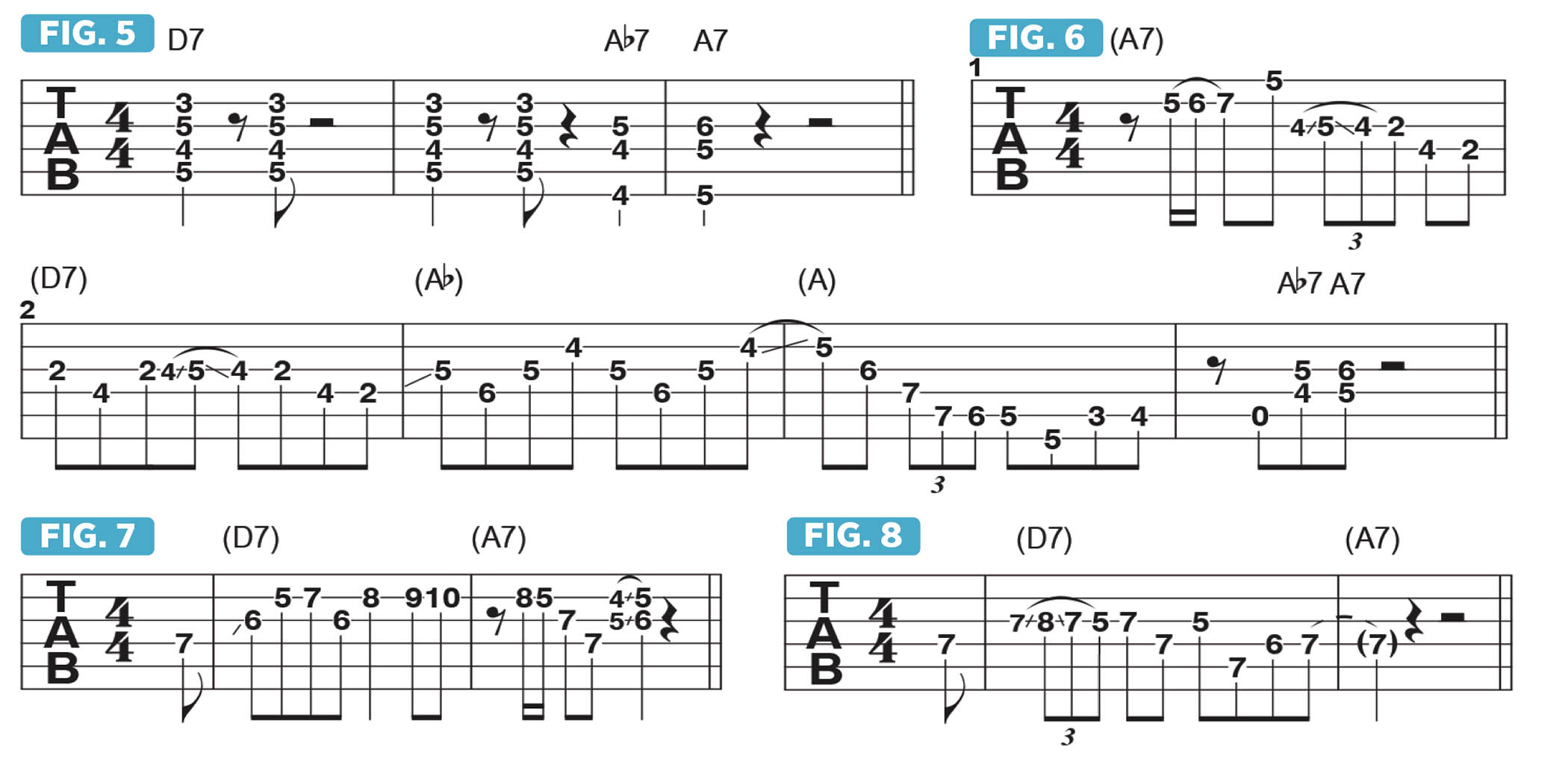
Over the next few columns, I’d like to demonstrate three distinct approaches I like to take to expand my soloing vocabulary within the blues form: chromaticism, diminished/augmented chords, and ii - V - I (two-five-one) turnarounds. These are some specific devices I use to build musical bridges between chords while moving through a blues chord progression.
To me, referencing, or outlining, the chord changes with single-note lines presents a more harmonically interesting approach than just playing pentatonic licks or notes that “agree with” a specific chord. Connecting the chords with a single-note melody is commonly referred to as “playing through the changes.”
Let’s begin our investigation with chromaticism – notes or chords played half steps apart. In Figure 1, I demonstrate a 12-bar blues in the key of A, with the I (one) chord being A9, the IV (four) chord being D7 and the V (five) chord being E7.

Throughout the figure, I use chromaticism to approach each of these primary chords from either a half step below or above. In order to set up the IV chord, D7, that falls on beat 1 of bar 2, I first play its lower chromatic neighbor chord, C#7, at the end of bar 1. At the end of bar 2, I approach the A9 chord that falls on beat 1 of bar 3 from its upper neighbor, Bb9. This approach is repeated in bars 4-6.
At the end of bar 7, I use the lower-neighbor approach again and play G#9 to set up the A9 chord in bar 8. And in bars 8, 9 and 12, Eb7 is used as a descending chromatic passing chord between E7 and D7.
When you begin to hear those “in between” chords, you'll naturally want to allude to them with your single-note lines. It’s a great exercise to play rhythm guitar in this way, adding as much chromatic motion as you can, because your ear will become trained to hearing the “transition” chords as you improvise.

Okay, so how do we start applying this approach to soloing? Let’s take the first move in a 12-bar blues, which is the I chord, A9 in this case, moving to the IV, D7. In Figure 2, I approach the D7 chord on beat 1 of bar 2 with Eb7 (its upper neighbor) on beat 4 of bar 1.
Let’s apply this to a slow blues. In Figure 3, which is played in 128 meter, I set up D7 by sliding up to a partial Eb9 chord and adding one melodic tone, C.

Figure 4 shows how to apply this approach within a shuffle, notated in 44. At the end of bar 3, I slide from C to C# on the 3rd string, followed by F and Bb, on the 2nd and 1st strings, respectively, melodically outlining Eb9. I then end the phrase with a chromatic “walk-up” to F#, the 3rd of D7.

Continuing this approach for the IV chord, D7, back to the I, A7, Figures 5-8 illustrate four different ways to reference chromatic movement. Now that you have the concept, try applying it to the last three chords in the progression – E7 to D7 to A7.







